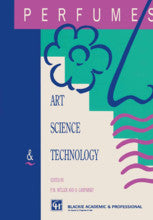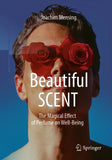Perfumes Art, Science and Technology By Muller, P.M., Lamparsky, D. (Eds.)
Perfumes
Art, Science and Technology
Muller, P.M., Lamparsky, D. (Eds.)
1994, VIII, 658 pages
The idea of publishing this book on Perfumes: Art, Science and Technology grew out of the observation that, on the verge of the 1990s, there was really no state-of-the-art compilation of the relevant know-how on which the fragrance industry is based. It was obvious that such a compilation would be well received, not only by perfumers and fragrance chemists, but also by those involved in related trade and marketing or in the development and distribution of consumer products, by researchers from other fields, by students and, finally, by amateurs of perfumes in general. Therefore, we set out to find competent authors who were willing to contribute to the endeavour, and we did not do this unselfishly; on the contrary, we selected a wish-list of specialists who would provide us with new insight and characterize the trends and research priorities determining the future. Thus, we were counting on learning much ourselves in the course of the project. We were more than pleasantly surprised by the reactions to our first letter-and so was Elsevier. We certainly had not expected perfumers who are usually much more 'doers' than 'writers' to react in such an enthusiastic way; especially, the spontaneous affirmative answer from the famous E. Roudnitska created a momentum which contributed significantly to the successful comple tion of this book. But, of course, we should not create the impression that the other authors' chapters are less important, and we thank all of them heartily for their invaluable effort.
TABLE OF CONTENTS :
I: Perfumery as An Art.
Chapter 1: The Art of Perfumery.
II: Perfumery as A Topic in Life Sciences.
Chapter 2: Odours and Perfumes as a System of Signs.
Chapter 3: Semiochemicals: Mevalogenins in Systems of Chemical Communication.
Chapter 4: Origin of Natural Odorants.
Chapter 5: A Consideration of Some Psychological and Physiological Mechanisms of Odor Perception.
- III: Trapping and Measuring of Odours.
Chapter 6: The Measuring of Odors.
Chapter 7: Trapping, Investigation and Reconstitution of Flower Scents.
- IV: Classification of Odours.
Chapter 8: Empirical Classification of Odours.
Chapter 9: Chemical Classification and Structure—Odour Relationships.
- V: Compository Techniques and Application Segments.
Chapter 10: Creative Perfumery: Composition Techniques.
Chapter 11: Support Materials for Odorant Mixtures.
Chapter 12: Perfumery Applications: Functional Products.
Chapter 13: The Impact of Market Research.
- VI: Production of Perfumes.
Chapter 14: The Chemistry of Synthetic Raw Materials Production.
Chapter 15: Compounding.
Chapter 16: The Toxicology and Safety of Fragrances.
Chapter 17: The Fragrance Industry in a Changing World.
- VII: Topics in Perfumery Research.
Chapter 18: Receptors: Current Status and Future Directions.
Chapter 19: Natural Products.
Chapter 20: Synthetic Products.
- Outlook.
- List of Contributors.


















